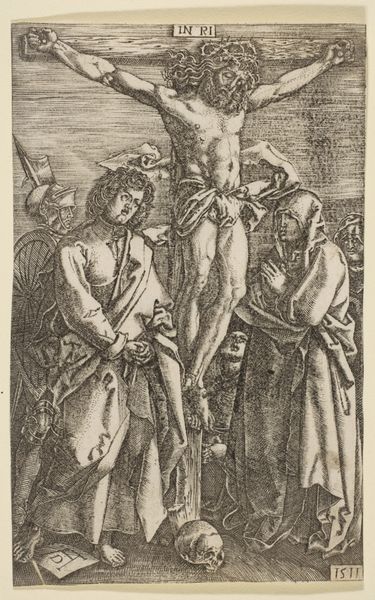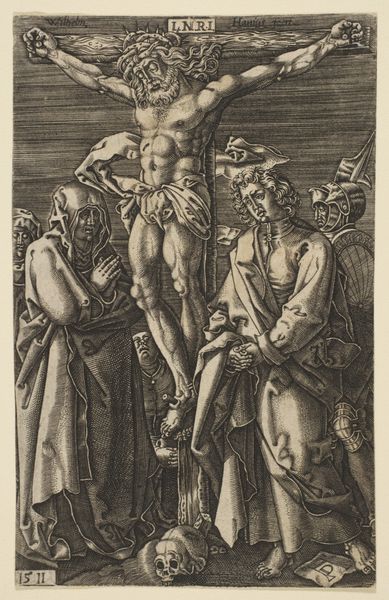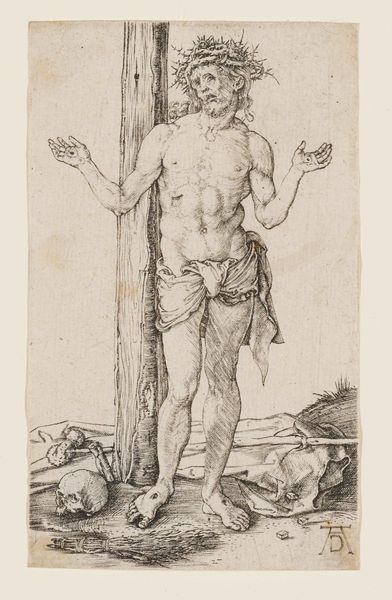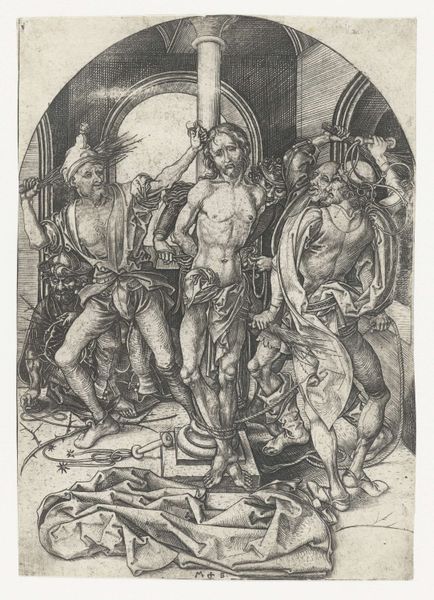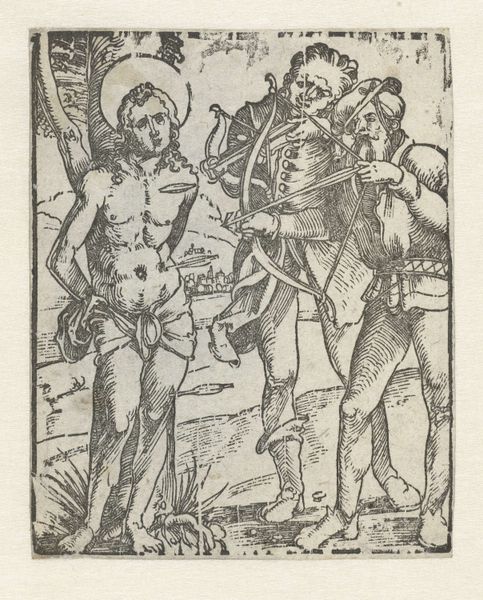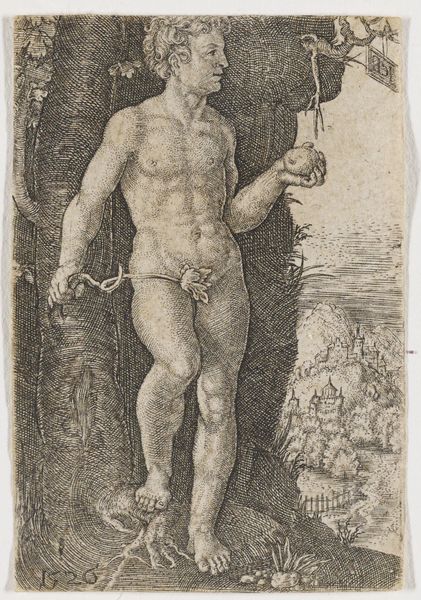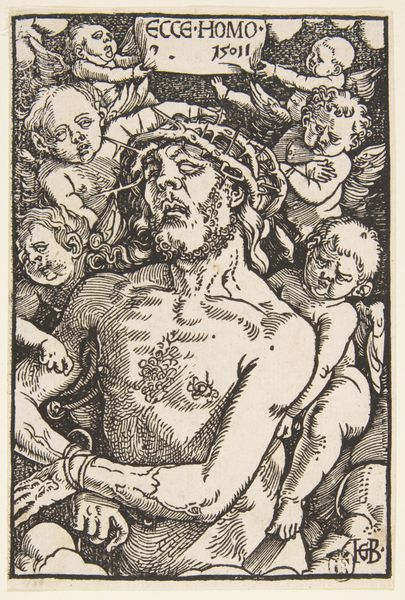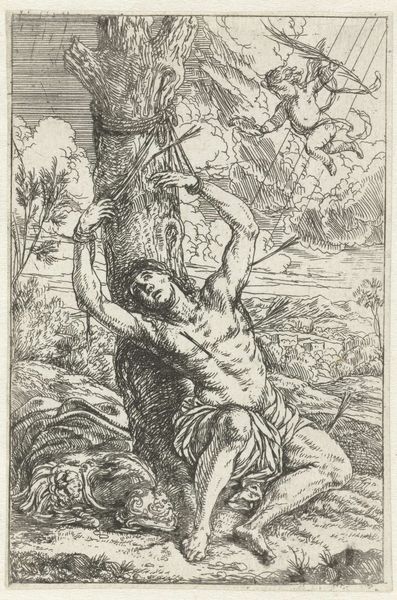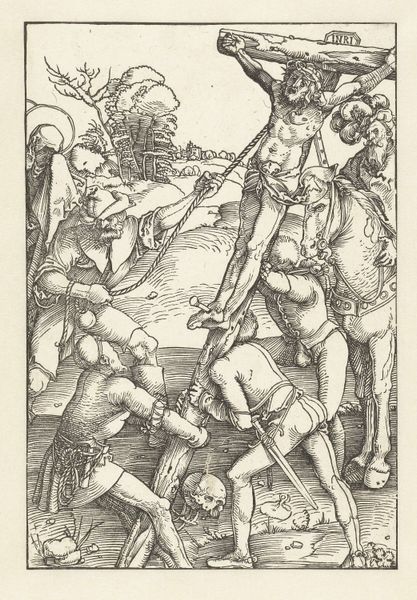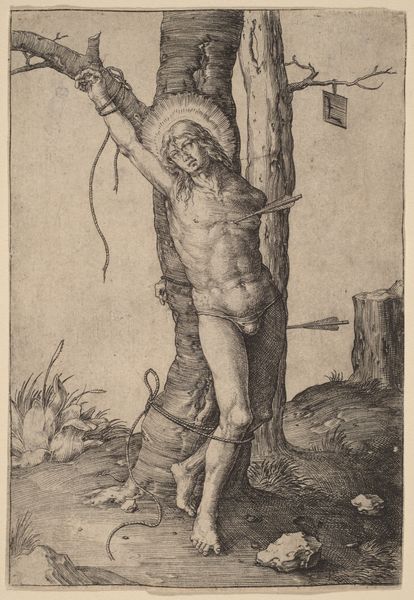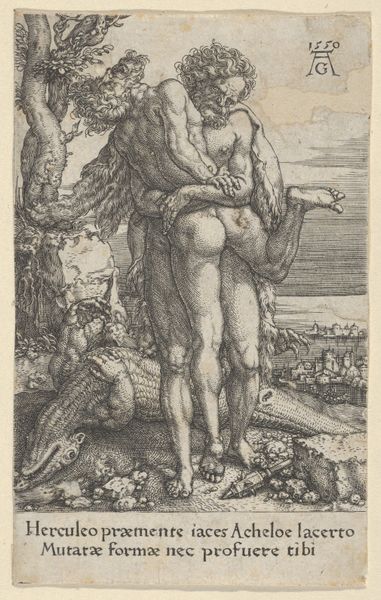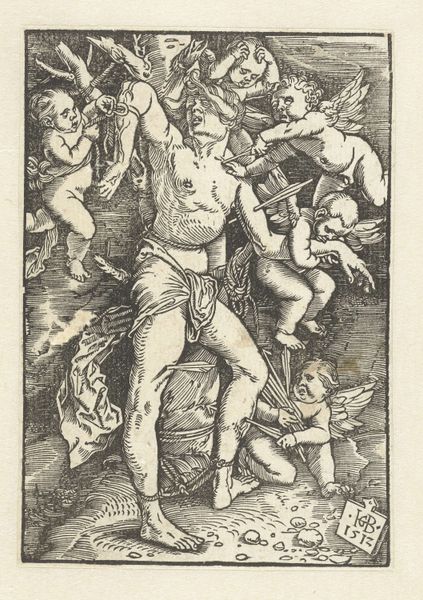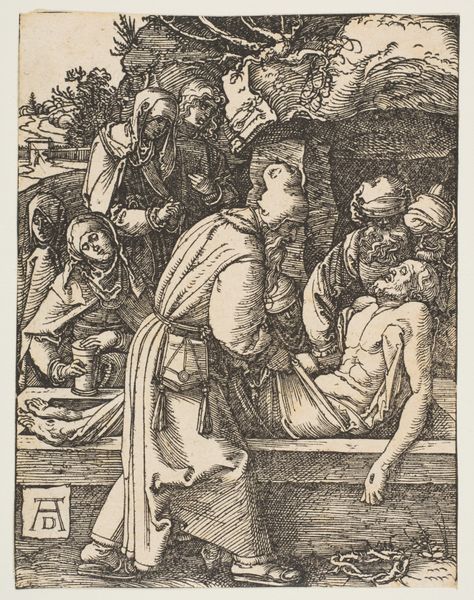
Heilige Sebastiaan aan de geselpaal, met rechter en beulsknecht 1488 - 1492
0:00
0:00
print, engraving
#
medieval
#
narrative-art
# print
#
figuration
#
northern-renaissance
#
engraving
Dimensions: height 88 mm, width 51 mm
Copyright: Rijks Museum: Open Domain
Curator: This is a stark piece: "Heilige Sebastiaan aan de geselpaal, met rechter en beulsknecht," or "Saint Sebastian at the whipping post, with judge and executioner," an engraving by the Master of the Amsterdam Cabinet dating back to between 1488 and 1492. Editor: My first impression is one of controlled brutality. The meticulous detail, especially in the figures' faces, contrasts sharply with the violence of the scene. The suffering almost seems clinical. Curator: That's interesting. I'm struck by how Sebastian's halo appears almost incidental, a mere circle behind his head, rather than a radiant symbol of his holiness. His lowered gaze invites empathy. Consider how the arrows at his feet, symbols of his eventual martyrdom, lie scattered and almost disregarded. Editor: The lack of overt emotional expression, which, yes, includes the halo, is what intrigues me. The men preparing to whip him – they aren't frenzied or hateful. This almost bureaucratic depiction of cruelty is a powerful indictment of the institutional sanctioning of violence. The art reflects late medieval anxieties regarding authority and power. Curator: Precisely. There's an almost transactional quality to it. But there’s also the cultural memory ingrained in the iconography. Saint Sebastian represents resilience, unwavering faith even when faced with unbearable suffering. Artists in that era depicted him frequently. Why? Because that image carries hope amid widespread upheaval: plague, warfare, and religious persecution. He is the epitome of the individual versus oppressive forces. Editor: I agree, the cultural persistence of this image tells us much about society. In this rendition, the Master’s sharp lines capture that conflict and make it strikingly immediate. Think of how readily these prints were circulated at the time! The work has socio-political implications for sure. Curator: Well, studying prints such as these provides keyhole insights into the past. It tells stories about faith, persecution, and ultimately, human endurance and resistance. Editor: Ultimately, it's about how we continue to assign our present understanding to visual stories and figures across vast historical stretches.
Comments
No comments
Be the first to comment and join the conversation on the ultimate creative platform.
